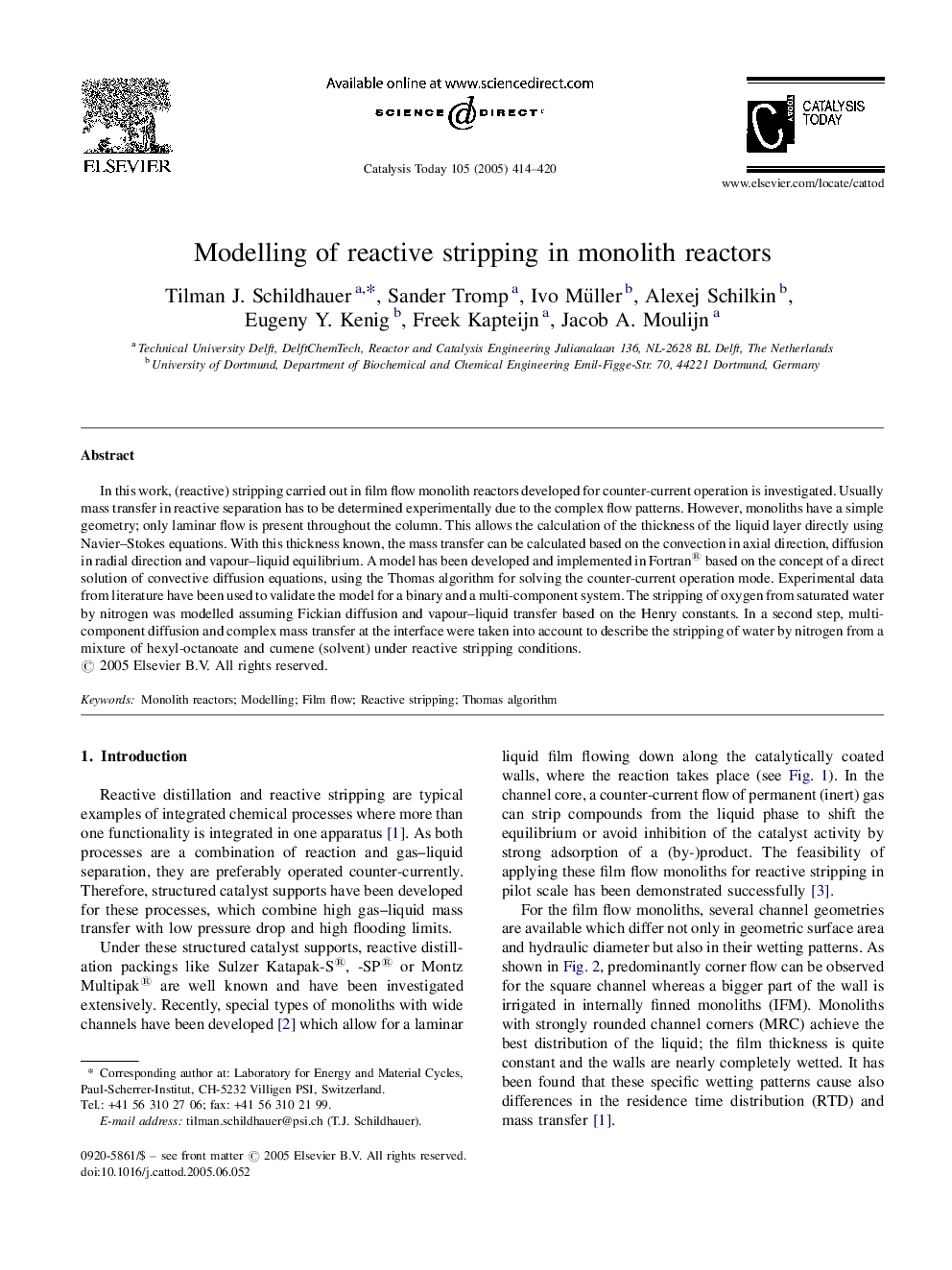| Article ID | Journal | Published Year | Pages | File Type |
|---|---|---|---|---|
| 9610335 | Catalysis Today | 2005 | 7 Pages |
Abstract
In this work, (reactive) stripping carried out in film flow monolith reactors developed for counter-current operation is investigated. Usually mass transfer in reactive separation has to be determined experimentally due to the complex flow patterns. However, monoliths have a simple geometry; only laminar flow is present throughout the column. This allows the calculation of the thickness of the liquid layer directly using Navier-Stokes equations. With this thickness known, the mass transfer can be calculated based on the convection in axial direction, diffusion in radial direction and vapour-liquid equilibrium. A model has been developed and implemented in Fortran® based on the concept of a direct solution of convective diffusion equations, using the Thomas algorithm for solving the counter-current operation mode. Experimental data from literature have been used to validate the model for a binary and a multi-component system. The stripping of oxygen from saturated water by nitrogen was modelled assuming Fickian diffusion and vapour-liquid transfer based on the Henry constants. In a second step, multi-component diffusion and complex mass transfer at the interface were taken into account to describe the stripping of water by nitrogen from a mixture of hexyl-octanoate and cumene (solvent) under reactive stripping conditions.
Related Topics
Physical Sciences and Engineering
Chemical Engineering
Catalysis
Authors
Tilman J. Schildhauer, Sander Tromp, Ivo Müller, Alexej Schilkin, Eugeny Y. Kenig, Freek Kapteijn, Jacob A. Moulijn,
